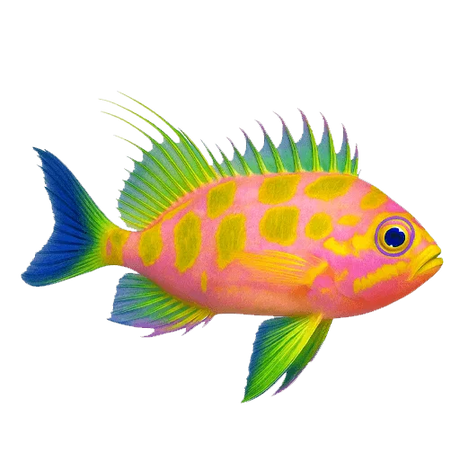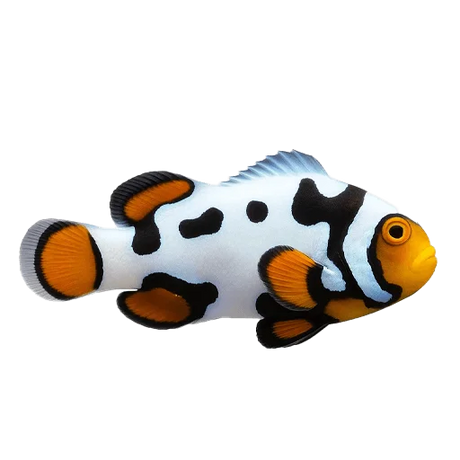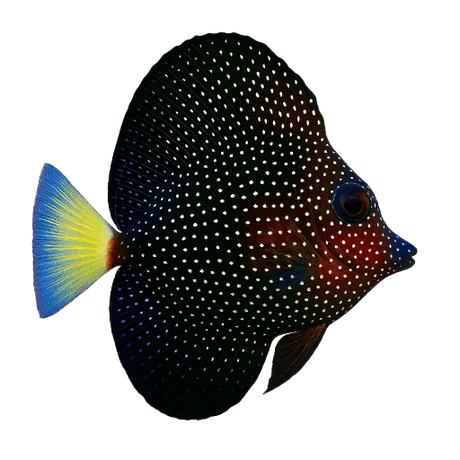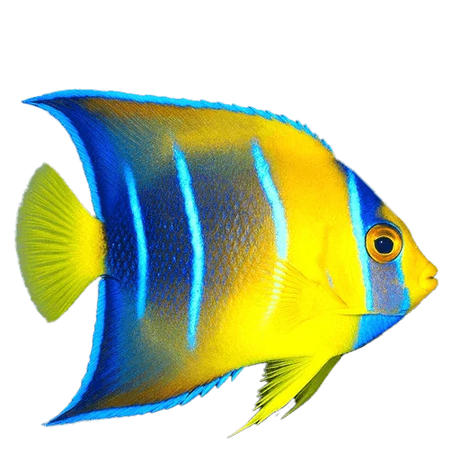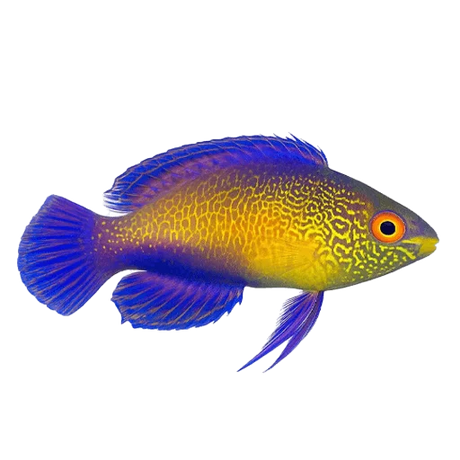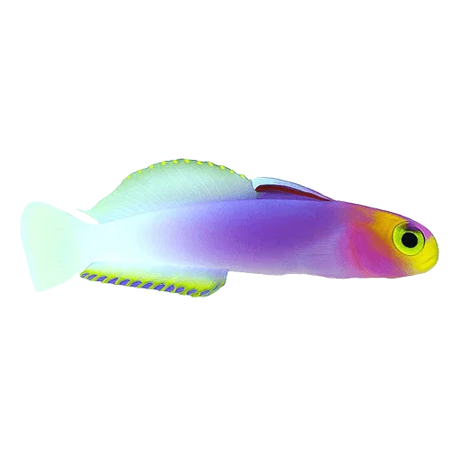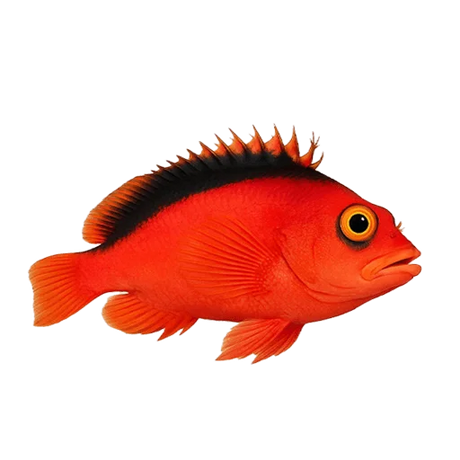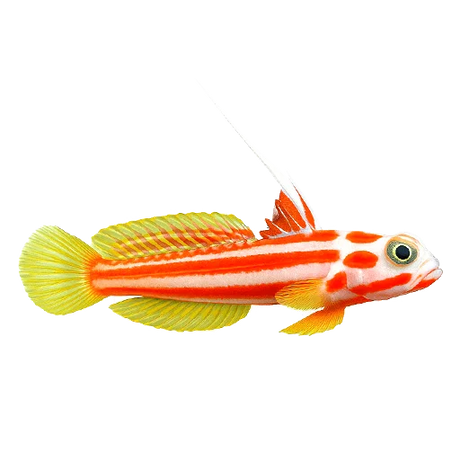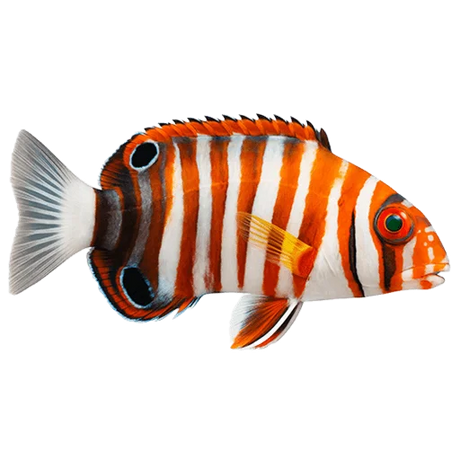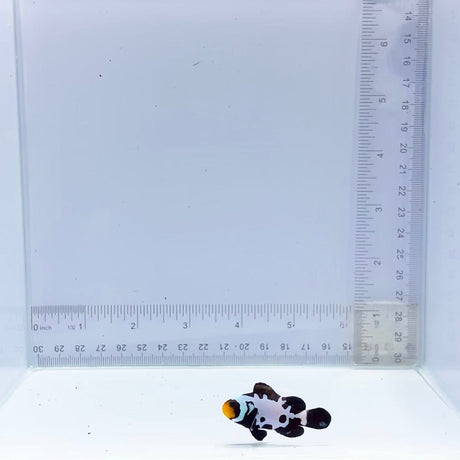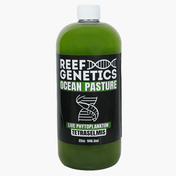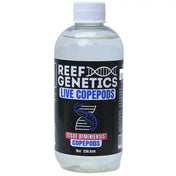| Description | Approx. Size: 1.25" to 2"
Premium Black Ice are a variation of our Black Ice with the first and second bars completed merged on one or both sides.
- Adaptability to Aquarium Life: Clownfish are well-suited for captivity due to their hardy nature and ability to adapt to various tank environments, making them popular among both novice and experienced aquarists.
- Symbiotic Relationship with Anemones: In captivity, clownfish often form symbiotic relationships with anemones, similar to their behavior in the wild. Providing anemones in the tank can enhance the well-being and natural behavior of clownfish.
-Breeding and Conservation: Clownfish are relatively easy to breed in captivity, contributing to their conservation by reducing the need for wild-caught specimens. Successful captive breeding programs help maintain healthy populations and alleviate pressure on wild clownfish populations.
| Approx. Size: 1.25" to 2"
The Gold x Lightning Maroon is the resultant cross between a Gold Nugget Maroon and Lightning Maroon. Offspring exhibit a wide variety of patterns ranging from Goldflake to Lightning maroons. Their coloration will darken, and the patterns will often intensify as the fish matures.
- Adaptability to Aquarium Life: Clownfish are well-suited for captivity due to their hardy nature and ability to adapt to various tank environments, making them popular among both novice and experienced aquarists.
- Symbiotic Relationship with Anemones: In captivity, clownfish often form symbiotic relationships with anemones, similar to their behavior in the wild. Providing anemones in the tank can enhance the well-being and natural behavior of clownfish.
- Breeding and Conservation: Clownfish are relatively easy to breed in captivity, contributing to their conservation by reducing the need for wild-caught specimens. Successful captive breeding programs help maintain healthy populations and alleviate pressure on wild clownfish populations.
| Approx. Size: 1.25" to 2"
The Captive-Bred Snow Storm Clownfish demonstrates a pearly white body color with minimal dark coloration on the fins and mouth. The Snow Storm Clownfish appears very similar to a Wyoming White, but have an all-white face with fins accented with or without a brilliant platinum blue coloration. Markings on the Captive-Bred Snow Storm Clownfish are unique to each individual.
- Adaptability to Aquarium Life: Clownfish are well-suited for captivity due to their hardy nature and ability to adapt to various tank environments, making them popular among both novice and experienced aquarists.
- Symbiotic Relationship with Anemones: In captivity, clownfish often form symbiotic relationships with anemones, similar to their behavior in the wild. Providing anemones in the tank can enhance the well-being and natural behavior of clownfish.
- Breeding and Conservation: Clownfish are relatively easy to breed in captivity, contributing to their conservation by reducing the need for wild-caught specimens. Successful captive breeding programs help maintain healthy populations and alleviate pressure on wild clownfish populations.
| Approx. Size: 1.25" to 2"
Premium Frostbite are a Flurry variant. Like the Flurry they have all bars connecting covering the entire body in milky white in color sometimes with a sapphire hue. Black margins are found on all the edges of every fin, however they are jagged lines like that of the snowflakes. They have an orange face mask, and some orange coloring can be found on the pectoral fins and possibly on others. What sets them apart is there are black dots on the sides of the fish with 10 dots or more.
- Adaptability to Aquarium Life: Clownfish are well-suited for captivity due to their hardy nature and ability to adapt to various tank environments, making them popular among both novice and experienced aquarists.
- Symbiotic Relationship with Anemones: In captivity, clownfish often form symbiotic relationships with anemones, similar to their behavior in the wild. Providing anemones in the tank can enhance the well-being and natural behavior of clownfish.
- Breeding and Conservation: Clownfish are relatively easy to breed in captivity, contributing to their conservation by reducing the need for wild-caught specimens. Successful captive breeding programs help maintain healthy populations and alleviate pressure on wild clownfish populations.
|
|---|

